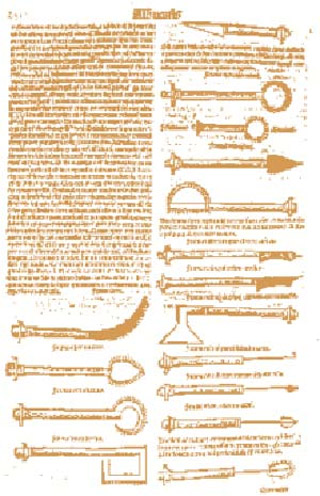Written Work
What is known about Az-Zahrawi is contained in his only written work: At-Tasrif liman ‘Azija ‘an at-Ta’lif (The Method of Medicine). At-Tasrif is a voluminous compendium of 30 treatises compiled from medical data that Az-Zahrawi accumulated in a medical career that spanned five decades of teaching and medical practice.
In At-Tasrif, Az-Zahrawi produced a medical encyclopedia covering a number of aspects of medicine with particular emphasis on obstetrics, maternal and child health, and the anatomy and physiology of the human body.

At-Tasrif elaborates on the causes, symptoms and treatment of disease, and discusses the preparation of pharmaceuticals and therapeutics, covering emetic and cardiac drugs, laxatives, geriatrics, cosmetology, dietetics, materia medica, weight and measures, and drug substitution.
Az-Zahrawi’s discussion of mother and child health and the profession of midwifery is of particular interest in the history of nursing. His text implies that there was a flourishing profession of trained midwifes and nurses in existence during 10th century Andalusia. He and other skilled physicians and obstetricians instructed and trained midwives to carry on their duties with knowledge and confidence.
The last and largest volume of At-Tasrif, “On Surgery,” was nothing less than the greatest achievement of medieval surgery. It was the first independent surgical treatise ever.

The Muslim Surgeon
The work covers a wide range of surgical issues including cautery, the treatment of wounds, the extraction of arrows, and the setting of bones in simple and compound fractures. Az-Zahrawi also promoted the use of antiseptics in wounds and skin injuries; devised sutures from animal intestines, silk, wool and other substances; and developed techniques to widen urinary passages and surgically explore body cavities.
Az-Zahrawi is the first to detail the classic operation for cancer of the breast, lithotrities for bladder stones, and techniques for removing thyroid cysts. He describes and illustrates obstetrical forceps, but only recommends their use with deceased fetuses, and provides the first known description of the obstetric posture now known as “Walcher’s position.”
At-Tasrif is also the first work in diagramming surgical instruments, detailing over two hundred of them, many of which Az-Zahrawi devised himself. Many of these instruments, with modifications, are still in use today.
With the reawakening of European interest in medical science, At-Tasrif quickly became a standard reference which they translated into Latin five times. The arrangement of the work, it’s clear diction, and its lucid explanations all contributed to its popularity and great success.
Az-Zahrawi’s influence on the course of European surgical development was deep and long lasting. Guy de Chauliac, the acknowledged “Restorer of European Surgery,” cites Az-Zahrawi more than 200 times.


